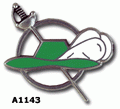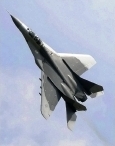|
|
Ukupno su 1296 korisnika na forumu :: 171 registrovanih, 6 sakrivenih i 1119 gosta :: [ Administrator ] [ Supermoderator ] [ Moderator ] :: Detaljnije Najviše korisnika na forumu ikad bilo je 3195 - dana 09 Nov 2023 14:47 - Korisnici koji su trenutno na forumu:
- Korisnici trenutno na forumu: Agape, airsuba, AleksandarV, Alexa77, amaterSRB, Ba4e, Bane san, bbelic, Belisarius, Bobrock1, bojankrstc, Borac1983, Boris BM, Boroš, Brana01, Bubimir, C-Gun, ccoogg123, Chainsaw, cifra, CikaKURE, Ciri1994, Citalac, comi, cvrle312, darkangel, Dd2011, dearg, Dejan_vw, Dimitrise93, djboj, djuradj, Dogma21, Dovla, dragan_mig31, draganl, dragoljub11987, Drugard72, dskrlec33, dule10savic, dulleo, Electron, Ezbuck, Feller, fokac, FOX, g0xy, galerija, Gerilac, Gheljda, glisok, Goran_, gregorxix, Hans Gajger, Haris, hyla, ILGromovnik, InzenjerBL, istina, istokzapad, Ivan001, ivan_8282, ivicasimo, Jablan, Jeremiah, jodzula, Joint Chief, JOntra, Jovan.D, Jovan1983, Jozo74, Još malo pa deda, K a s p e r, K2, Kajzer Soze, Kalem, kenny74, Kobrim, Kototamopeva, kybonacci, lafa008, laganini123, larix, Lazur_01, Leonov, Lieutenant, ljuba, lucko1, Luke Pathfinder, magyar, Makssd85, Malahit, Mane88, markomacii9, MaschinenPistole, mdp92, mercedesamg, Metanoja, miki kv, mikrimaus, Milan A. Nikolic, milenko1980, Millennium, MILO-VAN, milos.cbr, Mis uz pusku, mkukoleca, moldway, Mrav Obrad, mrvica78, nemkea71, NNPD, nobutado, Nomica, nuke92, Paklenica, pceklic, pein, pobeda, Podljub, Prečanin30, PrincipL, Pururin, raf87, RajkoB, Ray1973, repac, RJ, Rocky I, sabros, sale_bih, Semprini, septembar, Shajlok, Shinobi, shota91, Sinisa11, Sićko, srbijaiznadsvega, Stanlio, suponik, Tandrkalo, TBoy, Teodor60, TheBeastOfMG, Tila Painen, Toper, travisrise, Tribal, TRZH92, tubular, Username1000, Utd4ce, vathra, Vendox, vladetije, vladivostok, VX1, Wiesel092, XBMC, XiaomiX, yip314, yrraf, Zandar, zhuki8, ZlatniRez, zoran-ruma, zoran77, Zrcalo, Zukov, ČOBAN
|


















